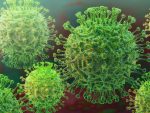The specific method of the coronavirus (SARS-CoV-2spread ) is unknown. Epidemiologists have discovered that countries with mask-wearing populations were less hit by the pandemic. However, the prospect of Kovid being broadcast over the air has already been verified.
The air transmission of SARS-CoV-2 was confirmed in a collaborative investigation done by scientists from CSIR-CCMB, Hyderabad, and CSIR-IMTECH, Chandigarh, as well as hospitals in Hyderabad and Mohali. The results of the research have been published in the Journal of Aerosol Science.
Scientists analyzed coronavirus genome material from air samples collected from different areas occupied by COVID-19 patients. These samples were from hospitals, closed rooms, and home quarantine rooms in which only COVID-19 patients had spent less time.
They discovered that the virus was frequently detected in the air around COVID-19 patients and that the incidence of the positive rose as the number of patients on the premises grew. The virus was also found in both ICU and non-ICU areas of hospitals, implying that patients released the virus into the air regardless of the severity of their sickness.
Viable coronaviruses were discovered in the air, which can infect living cells and propagate over large distances. To prevent the transmission of infection, scientists advise that one continue to wear a mask.
Read More: Covishield Vaccine Insufficient Against Omicron, Only One Way To Avoid It!
“Our results indicated that the coronavirus can linger in the air for some time in the lack of ventilation in closed areas,” said Sivaranjani Mohrir, a scientist involved in the study. When two or more COVID-19 patients were present in a room, the virus-positive rate in the air was 75 percent, compared to 15.8 percent when one or more COVID-19 patients were not present.
“Our findings are in line with prior research demonstrating that SARS-CoV-2 RNA concentrations are higher in indoor air than in outside air,” Mohrir added. The concentration is higher in hospital and health care settings, which host a larger number of COVID patients than community indoor settings.
The study’s lead scientist, Dr. Rakesh Mishra, ACSIR Distinguished Emeritus Professor at CCMB and Director of the Tata Institute for Genetics and Society said, “As we return to conducting individual activities, classrooms and meeting halls such as aerial surveillance are useful tools for predicting the infection potential of a site. This may help in refining strategies to control the spread of infection.
According to him, aerial surveillance equipment isn’t just for coronavirus monitoring; it can also be used to track other airborne illnesses.



